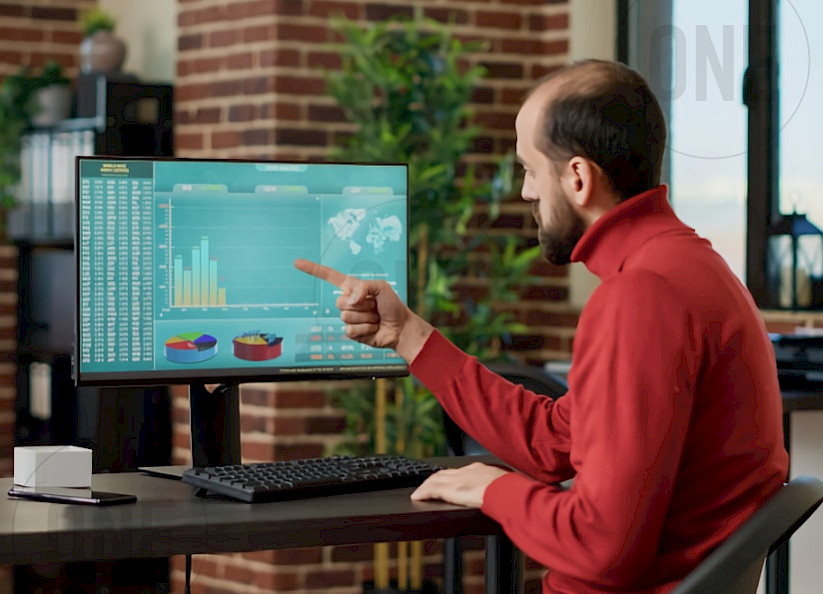Top Software Development Trends to Watch in 2025

In the non-ending technological race, new trends in software development pop up to solve your problems in a better way and create new opportunities. Technologies turn into trends when many businesses and organisations recognise them for aligning with business and social needs and disrupting existing systems.
Check the emerging trends of 2025 to understand your software engineering needs and find out whether you need a software architect or software engineer to build new solutions that drive innovation inside your industry.
Artificial Intelligence for a Complex Approach
Businesses operate enormous amounts of data and run thousands of processes every day. To organise these processes and solve complex problems, revolutionary AI tools are being created. Tools like ChatGPT, OpenAI, and Codex are among the latest software development trends. Accessible to everyone, they assist engineers with easier code debugging, creating documentation, and generating code snippets.
These tools help developers go from repetitive operations to creative tasks and concentrate on problem-solving rather than time-consuming routines. For businesses, AI-driven applications help to improve decision-making and level up user experience.
Amazon already utilises the power of AI to generate personalized product recommendations, IBM Watson generates diagnostic insights for doctors, and JPMorgan Chase detects fraud and manages risks via AI instruments.
LC/NC Solutions for Broader Audience
Low-code and no-code platforms like Airtable or OutSystems are among current trends in software development because they allow non-developers to participate in app creation. Stakeholders and client representatives can bring their vision into the creation of a solution for their business. For example, with Airtable PMs can build custom project management tools without technical expertise. Additionally, it reduces development time.
Along with other development trends to watch, they cover the growing need for digital transformation. Startups build their MVPs quickly and for reduced cost using Bubble. In the education industry, internal management apps are often built with LC/NC platforms. Shopify’s no-code tools allow small retailers to join the marketplace with their online stores.
Cloud-Native Architecture for Improved Performance

In terms of software development trends, 2025 will continue the tendency of the previous year to move into the cloud. Microservices and containers have changed the way of app building and deployment, giving flexibility in uncertain times. Improved performance and the possibility to update faster increase customer satisfaction with an app.
Microservices architecture is often managed via Kubernetes. Spotify uses this technology to aggregate personalized user recommendations. For Netflix, the cloud-native architecture gives the possibility for seamless streaming. Walmart utilizes microservices for fast and easy scaling. Similar tools can be also adopted in the gaming industry to build realistic and highly productive gaming environments.
Quantum Computing for Scientific Breakthroughs
Software development industry trends go far beyond commercial and business goals. They also move the world’s science. Quantum computing shows its capabilities in solving far more complex problems than classical computers. They can process much bigger volumes of information and find tendencies and patterns which help scientists come closer to important discoveries.
IBM runs quantum computing initiatives that have already shown the results. They simulated complex molecular interactions that helped scientists to accelerate new medications discovery.
Quantum coding has the potential to unlock unbelievable discoveries in logistics, cryptography and complex optimization. In the financial sphere, it can help optimize clients’ portfolios by advanced analytics, as HSBC explores. In logistics, DHL already makes investigations for advanced route planning.
Remote Development Tools for Enhanced Collaboration
Remote and hybrid work models rebounded from software development trends to a new norm in the software industry. Providing some benefits for clients and engineers, it also created some challenges for seamless collaboration. It made remote development tools vital for greater flexibility, reduced setup time and smooth communication within distributed workforce teams.
Cloud-hosted integrated development environments made a great difference in this field. Tools like GitHub Codespaces changed the way development teams work. These tools spread also into the education industry enabling schools and universities to offer remote learning via corporate collaborative platforms. For global corporations similar tools ease cooperation between representative offices in different countries.
AR/VR for New Possibilities

Augmented and virtual reality technologies stay among the top-demand software development trends in 2025. They expanded beyond entertainment into domains like remote work, healthcare, education, and business. Meta has presented Horizon Workrooms enabling distributed teams to collaborate inside the immersive virtual meeting spaces.
Advanced hardware and updated software offer new levels of user engagement, creating almost real-life experiences in training or virtual presence. Doctors get more complex training in virtual simulators, schools use VR for immersive and breathtaking learning experiences. Even in such an industry as retail IKEA has changed user experience by offering AR-powered possibility to visualise furniture in your room.
DevSecOps for Improved Security
Solid security shapes the future of software development and usage. Whether you use sideloading tools or buy certified applications from AppStore — as a user, you deserve to be sure about their safety. DevSecOps hits the offshore software development trends chart because it integrates secure development practices into SDLC. It allows for the detection and addressing of vulnerabilities in the early stages of app creation.
Security Monkey by Netflix is a prime example of this trend. Thanks to it, the automated security checks are integrated within continuous integration and deployment pipelines. The secure deployment is ensured without slowing down the development process.
How Trends in Software Development Power Future Innovation
Technologies turn into the latest software development trends addressing real-world needs and changing the way of solving top problems. The highlighted trends — from AI to DevSecOps — are shaping the future of software and business, going beyond programming languages improvement. They improve productivity, create next-level user experiences, and unlock new opportunities for businesses.





